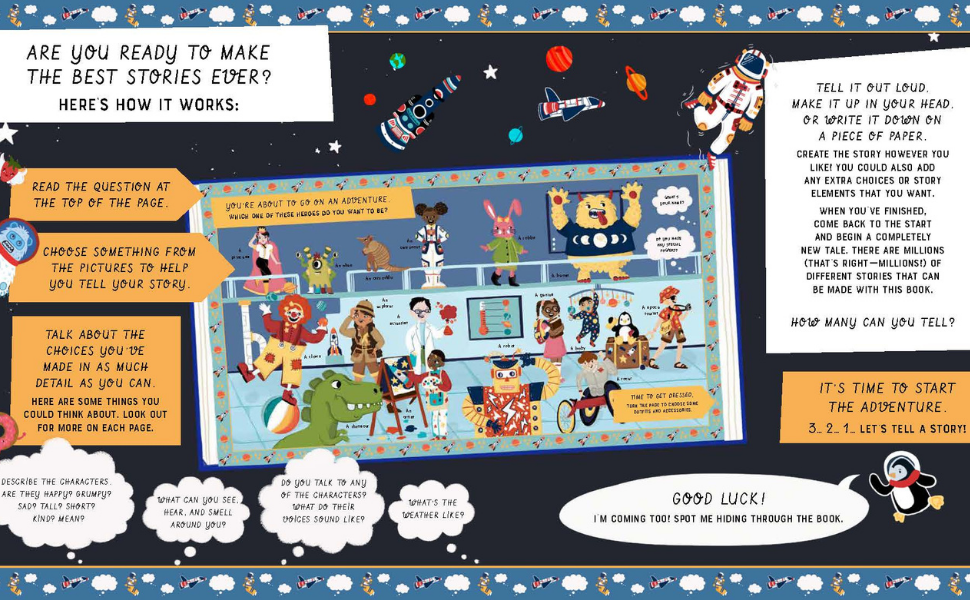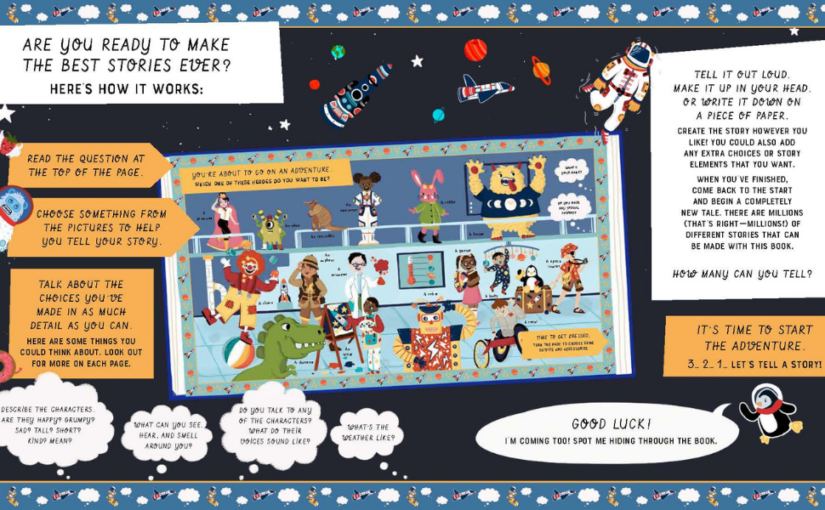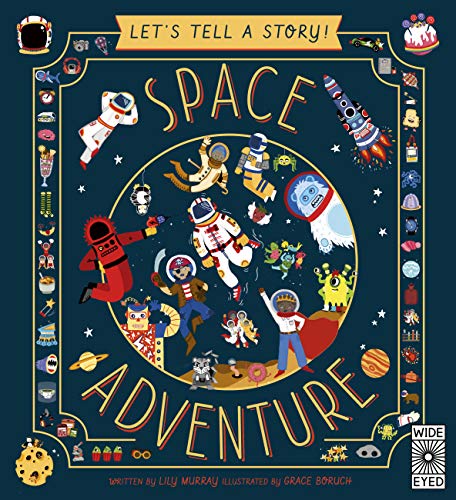You get what you deserve when you as an open-ended question to a class of elementary school students. I have a cat. We went to the beach. My sister threw up last night. As a teacher, you will get any response under the sun, most likely not at all related to what your initial query was about. The Let’s Tell A Story series of books on Wide Eyed Editions provides the framework for kids to build their own stories, without going entirely off the rails. Space Adventure lets kids choose from one of over a dozen characters, and then guides them with locations, plot devices, and more so that they can verbally tell their story.
Granted, there is certainly something to be said for kids creating their own story from their mind. That is very important. However, more often than not, you’ll end up with a thousand story threads, no narrative movement, probably a dragon or kitten as the main character and it would end too soon without finalizing anything. That is OK.
Sometimes though, parents, educators, and even children want their stories to make sense, in addition to using their massive imagination. That is what the Let’s Tell A Storybooks gets done so well. These books work as a group activity in the classroom, as a great good-night book where the kids are telling their own stories or just a silly fun time between a child and a parent.
After kids choose their character they’ll decide where they want to go. An eyeball planet, ice planet, planet cheese, volcano planet, or many more options are all places that they could visit. For any trip, you’ll need to pack, and on the next page, you can choose a variety of different things that you can take with you. Some of these are functional things, like a toothbrush, while others like the pet rock or some juggling balls could be packed.
When we use this book with our kids we ask them why, one of the famous 5 W’s, they want to take the item. You’re not traveling alone, so next up decide who else will be on the journey. How are you getting there? Which route are you taking? What are you going to eat? Where is your hero hangout?

What’s the conflict in the story? Kids also get to decide what the main source of trouble will be. Is it the terrible toast monster, a hungry black hole, angry aliens, or something else? Most importantly for the logic-centric adults, the story has an ending. You meet the space queen, set up an astronaut school, go on another adventure, turn yourself into an alien, or something else.
This is great because it will help kids tell a fascinating, wildly creative story that has every element of a well-thought-out tale. It’s the kind of story that will establish habits our growing storytellers will need as they start to write down their adventures, which also happens at this age. Space Adventure is great for those kids five through eight years old. The upper age range will start writing down their stories at about this time. The younger age range will get practice telling great stories, without the propensity to pointless rambling that’s cute at times, yet annoying at others.
Let’s Tell A Story Space Adventure is written by Lily Murray with illustrations by Grace Boruch and on Wide Eyed Editions, an imprint of Quarto Knows.
There are affiliate links in this post.







 Facebook
Facebook Twitter
Twitter Flickr
Flickr GooglePlus
GooglePlus Youtube
Youtube